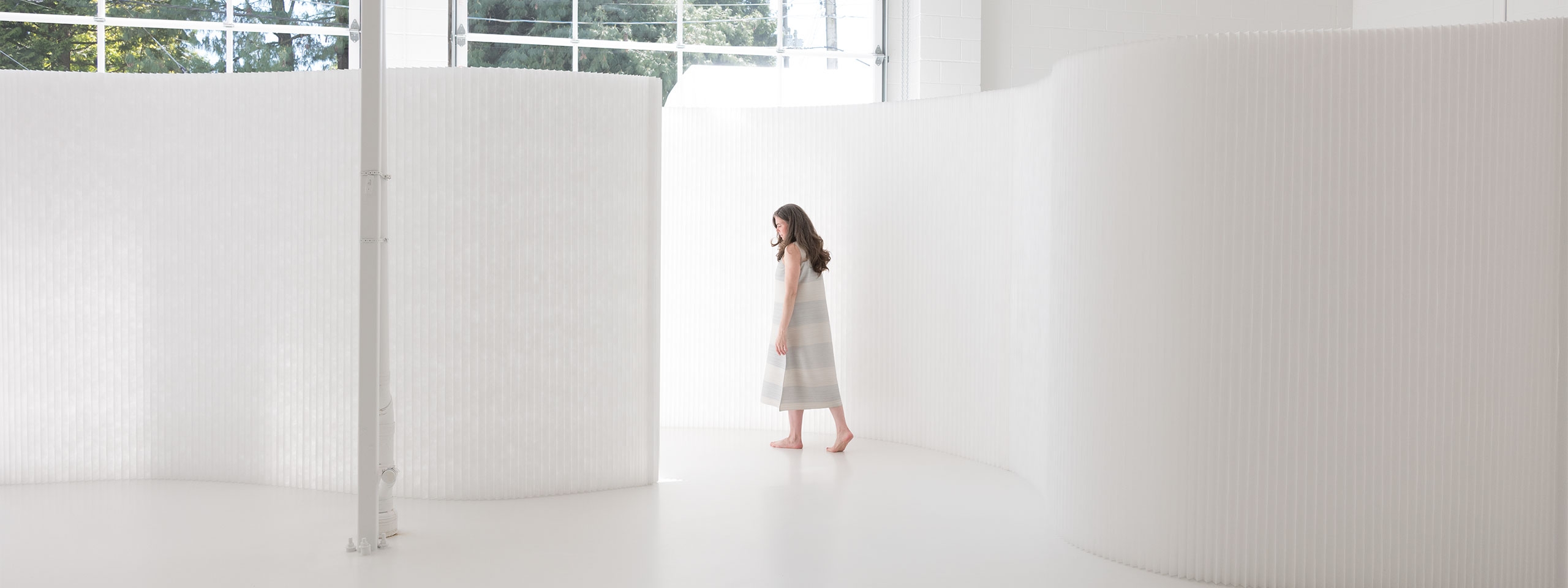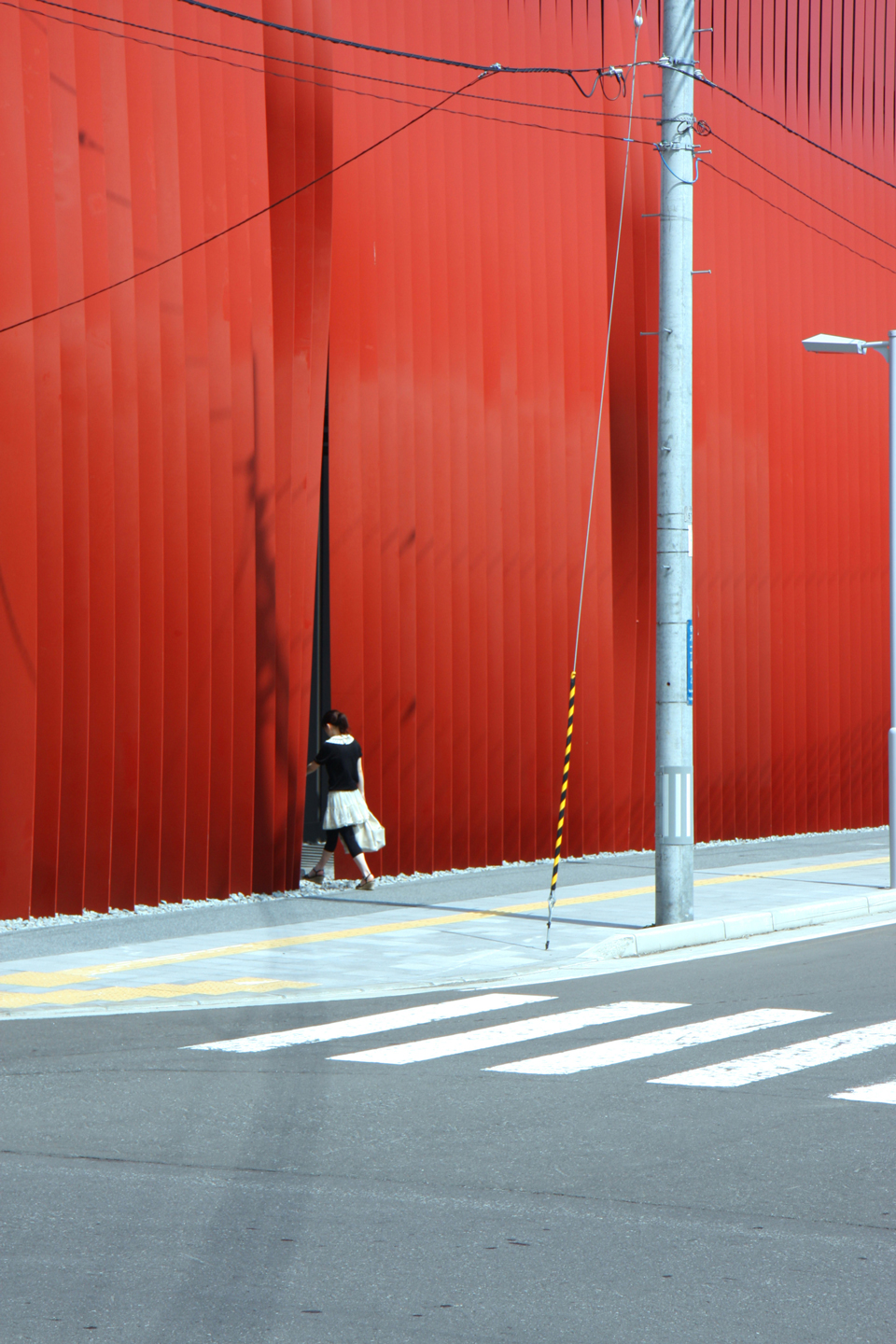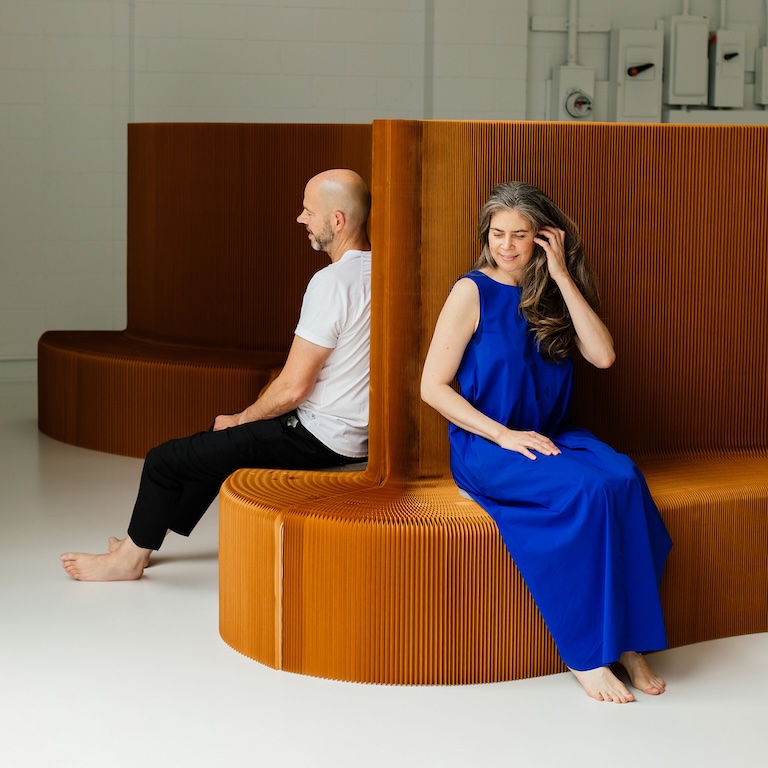
by Stephanie Forsythe and Todd MacAllen
The concept of world-building is most often associated with fantasy fiction, film, and gaming, describing how immersive visual spaces are artfully constructed to transport a viewer into alternate realities. Yet, world-building is not limited to narrative storytelling and media.
The spaces we shape, the objects we surround ourselves with, the atmospheres we cultivate — these, too, are acts of world-building. Whenever we open up our imagination to make a universe for ourselves, we are building a world to exist in — to work, to sleep, to play, to live.
While entering new phases of the year, we are invited to shape our lives with colours, textures, and emotions. Just as the natural world shifts with the seasons, our spaces can be fluid, adaptable, and responsive — mirroring not only the rhythms of nature but also the changing needs and aspirations of the world we want to live in.

creating living installations
At first, the idea of building our own world was a fantasy for us. But then, softwall provided an opportunity to create something beyond abstraction. As we developed it, we began to recognize its potential: a piece of flexible architecture that could shift, expand, and breathe, forming an environment that was dynamic, almost alive. It was an early experiment in creating an artistic space we could exist within, a glimpse into the possibility of shaping a world rather than merely designing objects within one.
Arranging lamps to mimic organic forms or incorporating soft materials with thick folds can shape a space’s atmosphere. Lighting has the power to bring a room to life, while colours infuse it with emotion. These are all ways we can transform homes, offices, and galleries into living installations to dwell in.
But this isn’t about closing ourselves off inside our own bubbles — far from it. It is about integration, designing spaces that acknowledge and respond to the outside world. This type of world-building enhances our appreciation for what is beautiful by creating coherence with our environments.
passing through thresholds
When building out installations at larger events, we enjoy playing with this idea of shaping a world. Using defined boundaries and transitions, we create a threshold to pass through from one world to another. Oftentimes, these exhibits are islands accessible from all sides, reinforcing the idea of a contained world. This is an example of the potential of world-building where we can cultivate spaces of respite from a cacophony of noise and busyness.


The concept of threshold was an integral part of the design of the Aomori Nebuta House in Japan. A permeable screen of steel ribbons wraps all four sides of the building, defining yet blurring the line between inside and outside with a covered walkway and entry, marking the shift from city to folklore. This design pays homage to the traditional Japanese engawa (縁側, meaning veranda or porch), creating a threshold that deepens the connection to the mythical, spiritual world within.

intentional transitions
We consciously design our own studio spaces to contain a variety of environments with transitional layers, allowing us to connect to our work, step away, and enter back in again. Achieved through volume, material and colour, open spaces are larger and all white with generous sunlight, gradually transitioning to smaller, more intimate private spaces shaped almost entirely from wood, specifically salvaged western red cedar or Douglas Fir. Materials are used to create both a sense of continuity and distinctive atmospheres. Each shift acts as a subtle threshold.
Our products allow for ease of experimentation with this idea of world-building. When creating boundaries between restful or dynamic space, whether to enhance sleep or stimulate creative work, we encourage you to explore how various materials, lighting, and objects can intentionally transform and connect environments.
room for experimentation
Our designs invite play and make room for experimentation. In a molo world, you can try something, and then try something else, ad infinitum. Unlike many design choices that feel irreversible, our pieces allow you to explore the layered transitions of life.
Similar to how digital spaces allow us to press “undo” with a click, we consider how environments can have that same fluidity. Our designs offer a rare opportunity to engage with space as a living, breathing extension of personal transformation. Each change becomes a step in learning, a moment of discovery — an unfolding dialogue between self, space, and time.

worlds of comfort
Moving from a thoughtfully designed space into one of discomfort is a jarring experience. It’s not always obvious at first, but when the lighting is too harsh, the materials feel cold, or the space lacks a natural flow, something feels off.
For instance, many important public spaces — clinics, hospitals, grocery stores — feel sterile and uncomfortable. This isn’t just an oversight, it’s a design omission. Standardization and building codes fail to recognize how profoundly space shapes our emotional and physical well-being. But it doesn’t need to be this way.
In countries like Finland or Denmark, mindful transitions between spaces are created through lighting, architecture, and sound, everywhere from airports to markets. They prove that public environments needn’t make us anxious.
We can imagine and build a better world.


